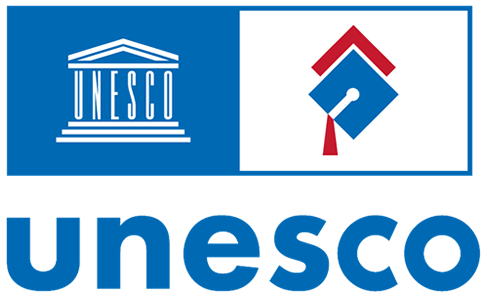¿Emparejamiento dispar en la educación superior? Determinantes del mismatch en Universidades chilenas
Resumen
El presente estudio busca identificar y cuantificar la existencia de asimetrías en el emparejamiento (mismatch) entre las aptitudes del estudiante y la selectividad o rentabilidad del programa de educación superior al cual accede. Controlando por los antecedentes socioeconómicos y académicos de los estudiantes, se estimó la magnitud de la brecha de emparejiamiento entre grupos de interés identificados como atingentes por la literatura. Luego, se estudiaron los potenciales determinantes de las brechas evidenciadas, como la distancia geográfica, el área de estudios, el tipo de financiamiento y la relevancia de la escuela secundaria. Los resultados muestran que los alumnos vulnerables y las mujeres sistemáticamente terminan accediendo a carreras menos selectivas y/o con menores retornos económicos, ceteris paribus. Se obtuvo que los factores más relevantes a la hora de explicar las brechas de correspondencia son el establecimiento escolar de educación secundaria, el área de estudios escogida por el estudiante y el tipo de financiamiento utilizado para costear la carrera. Los resultados resaltan la importancia de generar campañas de difusión de información para estudiantes vulnerables y de género femenino.
Citas
Arcidiacono, P. & Lovenheim, M. (2016). Affirmative Action and the Quality-Fit Trade-Off. Journal of Economic Literature, 54(1), 3-51. DOI: 10.1257/jel.54.1.3
Avery, C. & Hoxby, C. (2013). The Missing “One-Offs”: The Hidden Supply of High-Achieving, Low-Income Students. Brookings Papers on Economic Activity, 44(1), 1-65. https://bit.ly/3At1LOy
Barr, N., Chapman, B., Dearden, L., & Dynarski, S. (2019). The US college loans system: Lessons from Australia and England. Economics of Education Review, 71(1), 32-48. https://doi.org/10.1016/j.econedurev.2018.07.007
Black, S., Cortes, K. & Arnold, J. (2015). Academic Undermatching of High-Achieving Minority Students: Evidence from Race-Neutral and Holistic Admissions Policies. American Economic Review, 105(5), 604–610 http://dx.doi.org/10.1257/aer.p20151114
Bolton, P. (2020). Student loan statistics. Briefing Paper Number 1079, House of Commons Library. https://bit.ly/3c8OdhQ
Campbell, S., Macmillan, L., Murphy, R. & Wyness, G. (2020). Matching in the Dark? Inequalities in student to degree match. CEPEO Working Paper Series, 20-01, UCL Centre for Education Policy and Equalising Opportunities. https://bit.ly/3poySNi
Canales, A. (2016). Socioeconomic differences in the application to chilean universities: The role of academic and non-academic factors. Calidad en la educación, (44), 129-157.http://dx.doi.org/10.4067/S0718-45652016000100006
Carranza, J. & Ferreyra, M. (2019). Increasing Higher Education Access: Supply, Sorting, and Outcomes in Colombia. Journal of Human Capital, 13(1), 95-136. https://doi.org/10.1086/701435
Contini, D., Cugnata, F. & Scagni, A. (2018). Social selection in higher education. Enrolment, dropout and timely degree attainment in Italy. Higher Education, 75, 785-808. https://doi.org/10.1007/s10734-017-0170-9
Cox, L., Hernando, A. & Rebolledo, A. (2018). Una Evaluación de la Educación Superior: La Mirada de los Estudiantes. Centro de Estudios Públicos, 150, 7-74. https://bit.ly/3CcMl2l
Deng, F. & Rong, L. (2021). China’s Higher Education Expansion and Its Impact on Equality in Educational Opportunity. International Journal of Educational Reform. 31(1), 79-97. https://doi.org/10.1177/10567879211026667
Dillon, E.W & Smith, J.A. (2017). Determinants of the Match between Student Ability and College Quality. Journal of Labor Economics, 35(1), 45-66. https://doi.org/10.1086/687523
Dillon, E.W & Smith, J.A. (2020). The Consequences of Academic Match between Students and Colleges. Journal of Human Resources, 55(3), 767-808. https://bit.ly/3wb1D3R
Dynarski, S., Libassi, C.J, Michelmore, K., & Owen, S. (2018). Closing the gap: The effect of a Targeted, Tuition-Free promise on College Choices of High-Achieving, Low-Income Students. National Bureau of Economic Research. Working Papers Series, Number 25349. https://bit.ly/3poolBJ
Gibbons, S. & Vignoles, A. (2012). Geography, choice and participation in higher education in England. Regional Science and Urban Economics, 42(1-2), 98-113. ISSN 0166-0462.https://doi.org/10.1016/j.regsciurbeco.2011.07.004
Li, I. & Carroll, D. (2020). Factors influencing dropout and academic performance: an Australian higher education equity perspective. Journal of Higher Education Policy and Management, 42(1), 14–30. https://doi.org/10.1080/1360080X.2019.1649993
McNally, S. (2016). How important is career information and advice? IZA World of Labor, 317. https://bit.ly/3A5J7Lt
Murphy, R., Scott-Clayton, J. & Wyness, G. (2019). The end of free college in England: Implications for enrolments, equity, and quality. Economics of Education Review, 71, 7-22. https://doi.org/10.1016/j.econedurev.2018.11.007
Ocegueda, J., Miramontes, M., Moctezuma, P. & Mungaray, A. (2017). Análisis comparado de la cobertura de la educación superior en Corea del Sur y Chile: una reflexión para México. Perfiles Educativos, 39(155), 141 - 159. https://doi.org/10.22201/iisue.24486167e.2017.155.58061
Santelices, M., Zarhi, M., Horn, C., Catalán, X. & Ibáñez, A. (2020). Information sources and transition to higher education: Students, teachers and school counselors’ perspectives. International Journal of Educational Research, 103, 101617. https://doi.org/10.1016/j.ijer.2020.101617
Santelices, M., Catalán, X., Kruger, D. & Horn, C. (2016). Determinants of persistence and the role of financial aid: lessons from Chile. Higher Education, 71, 323-342. https://doi.org/10.1007/s10734-015-9906-6
Smith, J., Pender, M., & Howell, J. (2013). The full extent of student-college academic undermatch. Economics of Education Review, 32, 247-261. ISSN 0272-7757. https://doi.org/10.1016/j.econedurev.2012.11.001
Derechos de autor 2022 Revista Educación Superior y Sociedad (ESS)

Esta obra está bajo licencia internacional Creative Commons Reconocimiento-NoComercial 4.0.
Los derechos de autor permiten la protección del material original, y frena la utilización del trabajo ajeno sin permiso. UNESCO IESALC se adhiere a las licencias Creative Commons en la publicación de acceso abierto de la ESS. En concreto, los textos publicados en esta revista están sujetos a una licencia Creative Commons Reconocimiento-NoComercial 4.0 Internacional (CC BY-NC 4.0): Pueden ser copiados, distribuidos y difundidos siempre que se cite al autor, a la revista (Revista Educación Superior y Sociedad) y a la institución que los publica. No se permite el uso comercial. La licencia completa puede consultarse en https://creativecommons.org/licenses/by-nc/4.0/ La ESS requiere que los autores acepten el Copyright Notice como parte del proceso de envío. Los autores conservan todos los derechos.
 Reconocimiento – NoComercial (CC BY-NC 4.0)
Reconocimiento – NoComercial (CC BY-NC 4.0)
Esta revista no aplica ningún tipo de cargo a los autores por la presentación o procesado de los artículos. Los autores de las colaboraciones recibirán acuse de recibo de que el trabajo ha llegado al Equipo Editorial de la Revista.








-literales-100x311.png)
